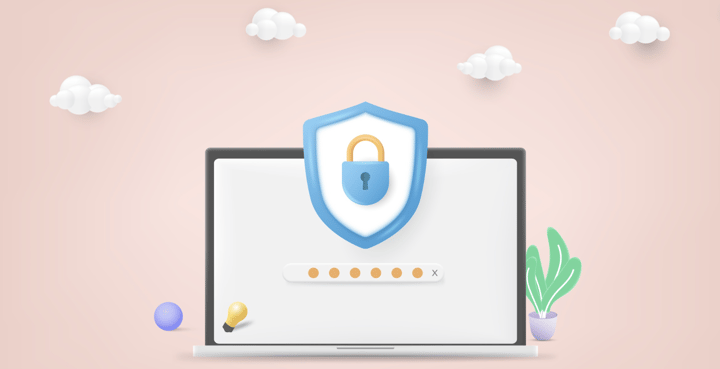Invoice fraud detection: What is it and how can you spot it?
.png?length=1024&name=How%20to%20prepare%20for%20your%20year-end%20Accounts%20Payable%20audit%20%20(6).png)
In a time where organisations are transitioning to more digital processes, online data management and cloud-based solutions, the risk of fraud is greater than ever. UK Finance reports that over £1.2 billion was stolen from companies by criminals through fraud in 2022, with £49.5 million through invoice and mandate fraud alone. The report also highlights that 78% of company fraud cases in 2022 originated from online sources.
Clearly, invoice fraud shouldn't be underestimated. How can you protect your finances and remain vigilant to the evermore sophisticated scams that fraudsters are using? In this article, we'll discuss the key ways to spot invoice fraud and support your organisation to reduce the impact and risk.
What is invoice fraud?
Invoice fraud is a deceptive practice that targets individuals and businesses through manipulated or fake invoices, with the aim of financial gain. The 2023 AFP® Payments Fraud and Control Survey reports 65% of organisations were victim to payment fraud attacks/attempts in 2022, highlighting how prevalent this is across businesses.
Invoice fraud involves the creation or editing of invoices to misrepresent payment details or trick recipients into making unauthorised payments. It's an issue that affects both individuals, small and large businesses, posing significant financial risks.
The consequences of falling victim to invoice fraud not only includes financial loss, but also can drive reputation damage and disruption to your business operations.
How is invoice fraud committed?
Invoice fraud commonly works by an illegitimate fraudster posing as one of your genuine suppliers, telling you their payment details have changed, or they supply a fake invoice. These attacks usually look almost identical to a legitimate invoice sent from a genuine supplier.
Another method is when your supplier's email gets hacked and the fraudster tries to change bank details to divert the funds their way. The email address is legitimate, so isn't always as straight-forward to spot.
As well as mimicking the design of the invoice, fraudsters tend to have important information like the specific time a vendor usually sends you an invoice or the specific time you usually pay your invoices which makes it even more difficult to spot as a fake invoice. Similarly, the invoice amount is usually quite low so it can navigate around internal controls and doesn't alert suspicion in the Accounts Payable department. A number of invoice fraud cases run for a long period of time.
Learn about real-life invoice fraud cases in this article.
How to identify a fake invoice
As we've seen, fraudsters intentionally make it very difficult to spot a fake invoice or invoice scam. It's vital to make sure your Accounts Payable team (and often your wider business) are shown how to spot a fake invoice. Here are three things to check when verifying invoice legitimacy:
- The payment details or bank account details are different from previous invoices (even only slightly different). If this is the case, make sure you confirm with the supplier that the bank details are their own before you process the invoice. It may be that the supplier has changed their details but haven't communicated the change to you. It's best to err on the side of caution and communicate via a phone call to verify the details.
- The payment details or bank account details are different from the details in your master vendor data file. Your master vendor file should act as the single source of truth for your supplier's bank details. If you receive an invoice with differing details, check with the supplier that they are correct before processing any invoices (and best to check via phone call, again).
- The invoice is for goods or services you haven't used. Make sure that all the invoices your accounts payable team processes are for genuine goods and services that have been purchased by your company.
Keeping your master vendor file up to date with your supplier's latest bank and payment details minimises the risk of fake invoices being paid as you can be certain the data in your master vendor file is only from genuine supplier.
Training your staff on the above checks so they know how to identify a fake invoice is key to preventing invoice fraud.
Alternatively, you can remove the burden on your already busy AP team and employ technology to be the detective for you. Xelix uses the latest AI to surface a wide range of risks including duplicate postings, bank account changes, suspicious activity, currency errors, misapplied tax, fraudulent activity and more before the pay run so issues and threats can be dealt with before it's too late.
What can you do if you already paid the fake invoice?
If you suspect an invoice is fake, contact the vendor straight away to verify their account details and whether the invoice is legitimate. Acting quickly is key to reduce the chance of the scammer getting away with the fraud. Your bank may also be able to block the fraudulent account so you aren't at risk of being scammed by the same account again.
Contact your bank as soon as you suspect a fake invoice so they can freeze the transaction and it may mean the amount can be returned to you more easily. AFP found in 2022, more than one-fourth of organisations that were victim to fraud (27%) were able to successfully recover at least 75% of funds lost. However, nearly half (44%) were unsuccessful in recouping any of the stolen funds.
You can also report any fraud to an authority such as Action Fraud, they help to prevent future fraud and can offer help and advice to support you and your business.
Protect your business from invoice fraud with smart technology
If you'd like to find out more about how Xelix can protect your organisation from invoice fraud, book a demo with us - we'd be happy to show you around our tool.
More articles you may be interested in
.png?length=720&name=How%20to%20prepare%20for%20your%20year-end%20Accounts%20Payable%20audit%20%20(4).png)

.png?length=720&name=Screenshot%202023-09-01%20at%2016.57.18%20(1).png)
